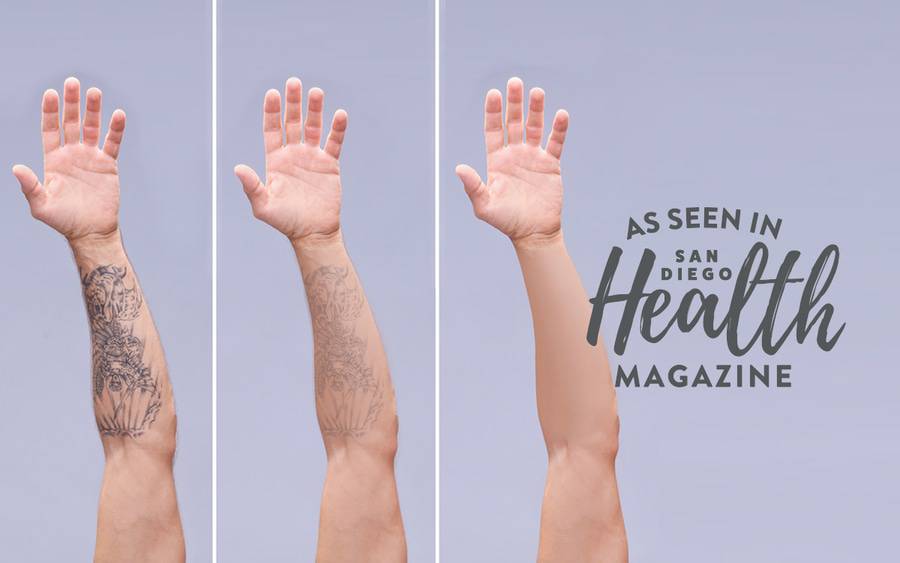How Tattoo Removal Works
Today’s laser tattoo removal techniques are quicker and more effective than ever before

Today’s laser tattoo removal techniques are quicker and more effective than ever before
That tribal tiger tattoo seemed like a good idea once upon a time, but now when you look in the mirror, you can’t help feeling buyer’s remorse. Fortunately, tattoo removal has come a long way in recent years.
Newer, more powerful lasers do a more effective job at breaking up ink particles so the body can flush them out. It takes fewer and shorter sessions now, too, says E. Victor Ross, MD, director of laser and cosmetic dermatology at Scripps Clinic in San Diego.
How are tattoos removed?
A laser beam about a half inch in diameter trained on the unwanted tattoo heats up the ink — but not the surrounding skin — so it breaks down the pigment, according to Dr. Ross, who has been removing tattoos since 1994.
Dr. Ross and his colleagues latest use powerful, versatile lasers to safely and effectively removes tattoos from the skin without harsh cutting, bleaching or abrasion.
How long does tattoo removal take?
“The actual time the laser is used is pretty darn short,” Dr. Ross says — under five minutes for a tattoo the size of a notecard. Including anesthesia and a consultation from the doctor, patients are often out the door in 15 minutes.
Here’s the catch: Several sessions are required — usually somewhere between four and 30. Bigger, newer tattoos and those with more ink require more sessions.
Does tattoo removal hurt?
Local anesthetic is usually injected for the procedure; the bigger the tattoo, the more numbing needed.
Does tattoo removal work?
Some tattoos can be completely removed, while others can be significantly lightened. Your dermatologist should consult with you prior to beginning treatment to let you know what to expect from treatment and how many treatments you may need.
“Black we can always remove,” Dr. Ross says. “Other colors don’t do as well, particularly colors like orange, green, blue and purple.”
One other caveat: Tattoos on the legs, especially the feet and ankles, have worse removal results. If the dermatologist isn’t entirely sure how effective the removal might be, or the patient isn’t sure they’ll be happy with the result, the doctor can test the procedure on a discreet area.
How quickly does the skin heal after laser tattoo removal?
“It’s normally an easy recovery,” Dr. Ross says. “There’s no lingering pain.” The skin will turn crusty for about a week, then return to normal. Afterward, the skin can even be re-tattooed — hopefully with results you’ll be happy with permanently.

This content appeared in San Diego Health, a publication in partnership between Scripps and San Diego Magazine that celebrates the healthy spirit of San Diego.